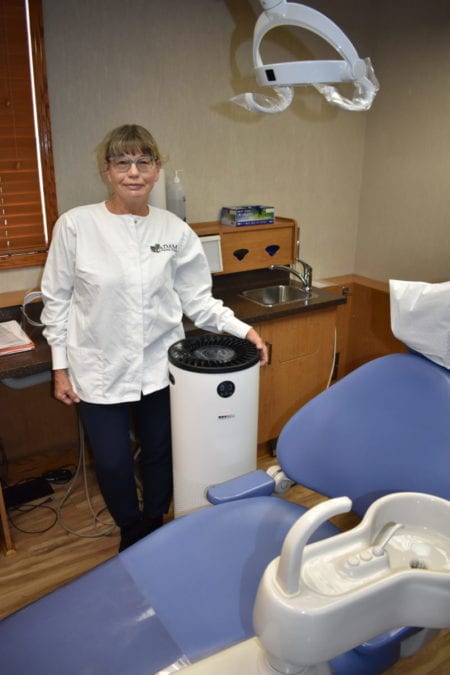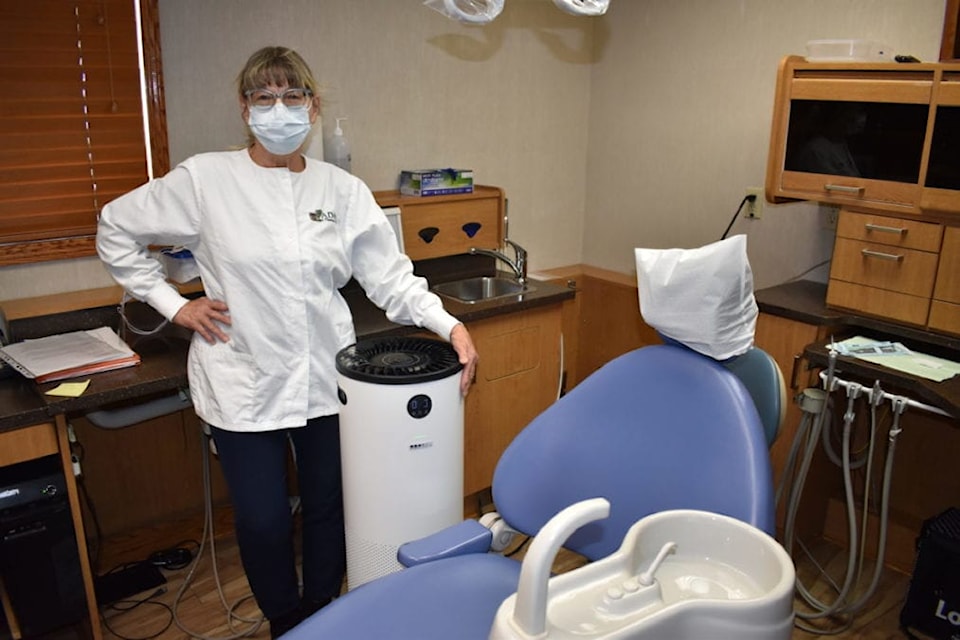Dentists across the NWT are concerned about the state of oral health in remote communities as strict Covid regulations have halted their travelling appointments for regular dental care.
Most communities outside Yellowknife lack dental clinics and depend on fly-in dentists for regular dental procedures.
After the pandemic arrived in March, visits by travelling dentists were halted by the Office of the Chief Public Health Officer (OCPHO) and haven't resumed.

Dr. Pirjo Friedman, a dentist at Adam's Dental Clinic in Yellowknife has been visiting patients in such remote communities as Fort Resolution, Whati and Fort Good Hope for years. She has been visiting patients in Lutsel K'e for 10 years.
Visits happened several times a year for five to 10 days at a time, depending on the community.
“My last trip was in March to Lutsel K'e,” Friedman said. “The OCPHO informed me I had to stop doing the visits and working on March 20. I was in Lutsel K'e when they called me. I had two patients I was supposed to see and the nurse in charge got the call and told me I had to stop working on them. Then I flew back here. I haven't been to any communities since.”
Patients now have to come to Yellowknife if they want dental services. Friedman said most of them come here for emergencies like broken fillings, pain or denture issues. Few come for checkups.
“I hope we're able to go back again,” she said. “I've been going there for so many years there is already understanding made of better oral health.”
The NWT/NU Dental Association echoes Friedman's concerns.
“Dental teams are anxious to return to the communities to again provide dental services, as there have been no visits into the communities since prior to March 23,” said association president Dr. Roger Armstrong, who is also the owner of Great Slave Dental Clinic in Yellowknife.
“Those dentists who were providing emergency and essential care during the NWT containment phase were seeing a large influx of dental emergency patients from the communities. For me personally I was having some patients drive eight to nine hours to see me for emergency care.”
At the root of the suspension of visits are OCPHO dentistry standards that make dental trips to remote communities impractical.
The GNWT's Covid-19 dental standards document, published on June 15 was adapted from standards established by the Ontario and Saskatchewan dental associations, said OCPHO spokesperson Mike Westwick.
“The standards do not prevent dentists from practicing in small communities, unless the facility they are working in does not have a closed office,” he said.
But Armstrong sees the situation differently.
As an example, he points to regulations on air changes per hour, a measurement of the time it takes to remove airborne bacteria or infectious aerosols from the air. It is also known as “aerosol settle time.”
Air purifiers can increase the number of air changes per hour and reduce the aerosol settle time.
A baseline measurement of the air changes per hour, using specialized equipment is needed for dental treatment rooms, Armstrong explained.
But the health care centres in many remote communities have only a single, closed door treatment room where travelling dentists work with patients.
Armstrong said that to his knowledge, there are no baseline measurements of the air changes per hour for those rooms.
“The real issue is that the new standards put out by the OCPHO for dentistry in the NWT can not be implemented in an efficient manner in a single closed door treatment room in a community health care centre.
“The one size fits all approach adopted by OCPHO with respect to Infection Prevention And Control protocols, aerosol generating procedures and aerosol settle times has been adapted and works in a multi-treatment room facility in a regional NWT hub, but will not work in a single treatment room in a remote health care centre,” he said.
For most dental practices of moderate risk of aerosol generating procedures, the OCPHO's dental standards document states that the mandatory settling time is 15 minutes.
But Armstrong said that settling time corresponds with a rate of 20 air changes per hour, a rate that “can not be done just using the existing HVAC system.”
The dental association and dentists like Friedman have been lobbying the GNWT to consider other solutions that might lead to the resumption of remote community visits.
Armstrong said the association has contacted each health care centre in the NWT to receive input on dental services returning.
A meeting to discuss dental issues has also been planned between the GNWT, regional health authorities and Indigenous Services Canada (ISC) and “the NWT/NU Dental Association has been pushing to be part of this upcoming meeting,” Armstrong said. The meeting hasn't happened.
Westwick said the Department of Health and Social Services is working with ISC on developing solutions to enable dental services to resume in the communities.
Friedman has sent letters to the OCPHO expressing her concerns over the dentistry regulations and she believes it is possible to balance the appropriate Covid protocols while safely providing dental services in remote communities. She said the OCPHO hasn't responded to her most recent letter that she sent in mid-June.
Friedman has several solutions in mind that might enhance sterilization measures and make visits possible again.
“Right now the waiting time between appointments would be two hours if we did the appointments in one room,” she said. “Extra equipment we could bring with us (would) cut down on waiting times.”
The IQAir purifiers at her clinic are portable. Other equipment she could bring includes ultrasonic scaler devices, portable water supply units with treated water, ultrasonic root canal rotary equipment and denture models and impression guns.
All the equipment she has would be packed in sterile pouches and kept in sealed storage cabinets in the communities.
The portable equipment could complement the dental tools that are already in the communities, which are mostly brand new, she said.
Dr. Hazem Kobaisy, dentist and owner of Somba Ke Family Dental in Yellowknife used to do visits to Whati, Wekweeti and Gameti before Covid.
RELATED REPORTING: BACK TO BUSINESS: Somba K’e Family Dental grins again after months-long lockdown
He explained that remote communities have “high quality equipment ... but the problem is that there's just one room.”
“Before Covid it was adequate but I agree with the strict regulations now. All it takes is one case for things to get really bad.”
While Friedman hopes that visits can restart, she's concerned that the progress made in dental health in remote communities will be lost as the months pass with no regular visits.
“When we went regularly and treated peoples' teeth and got them motivated about oral health we were in a good situation before and now, in a place like Colville Lake, I don't know how long this will last. It looks like we're not going to go anytime soon. I'm very concerned about people having pain and nobody is helping them.”
